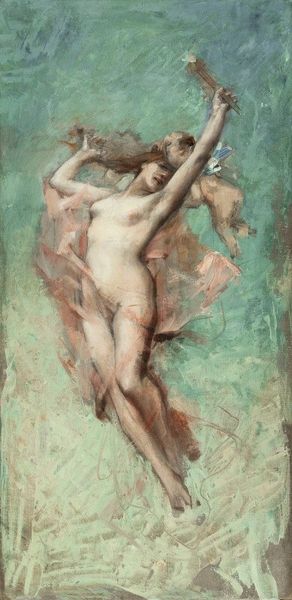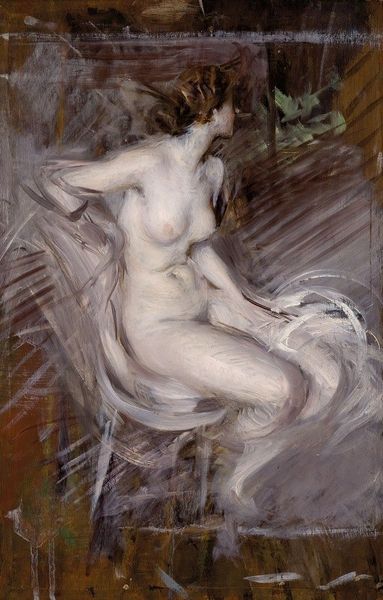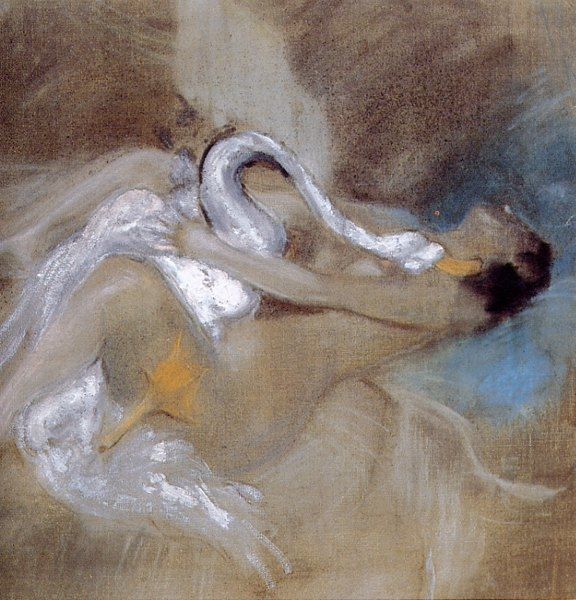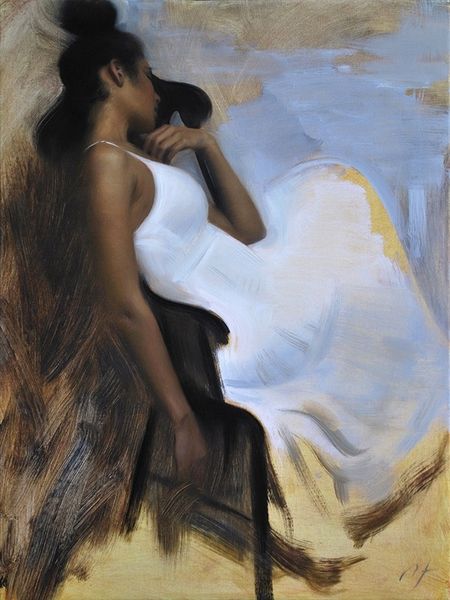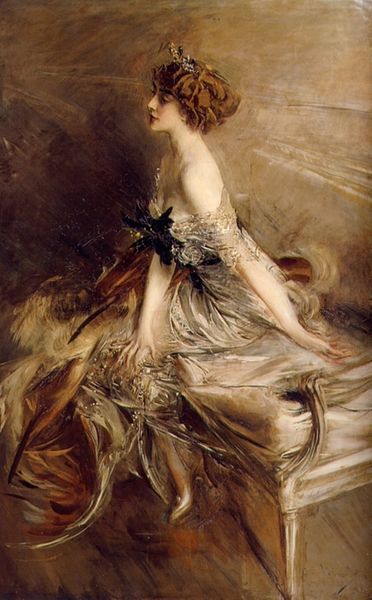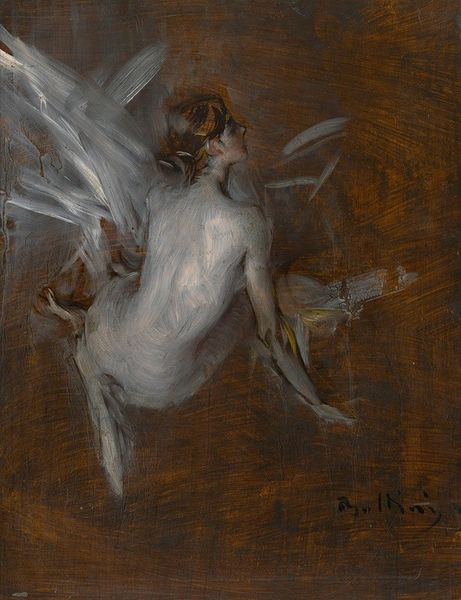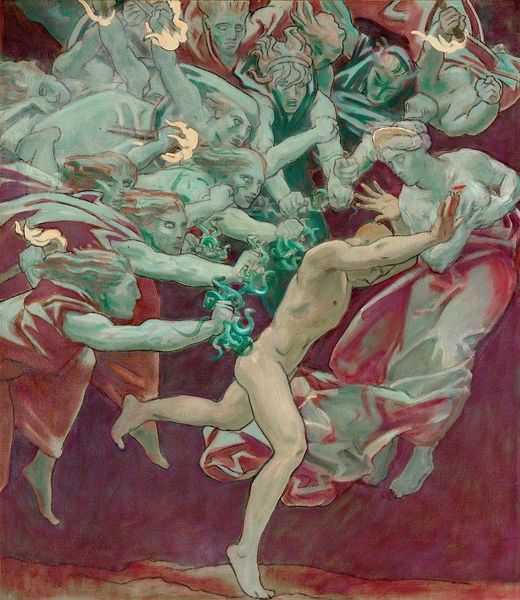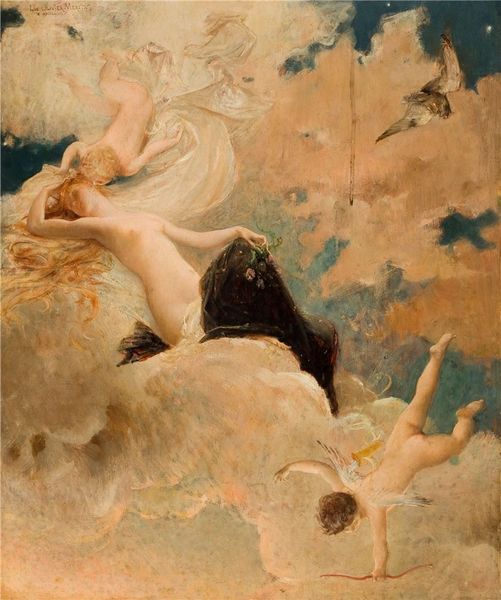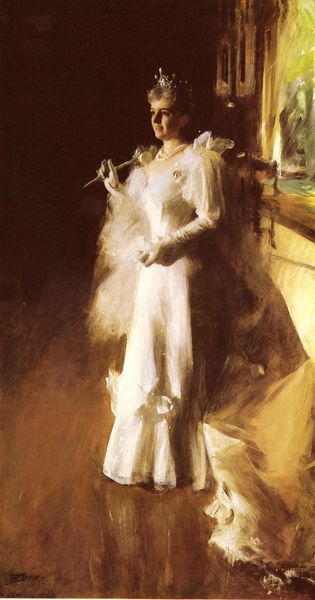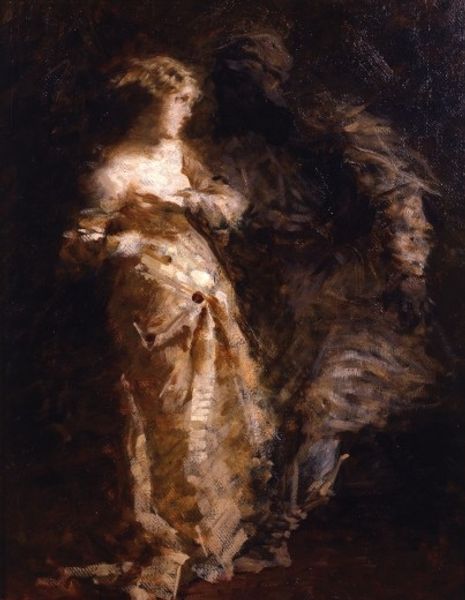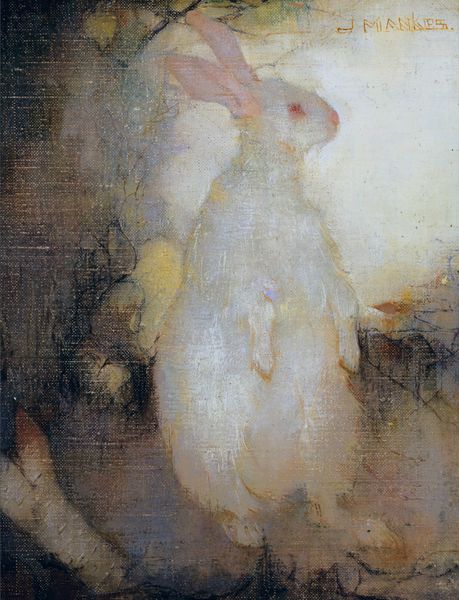
Copyright: Public domain
Editor: This is Giovanni Boldini’s "Young Woman's Head on a Pink Background" from 1912, an oil painting that strikes me as both ethereal and a bit melancholic, primarily because of its very muted palette and the sense of privacy, I’d say, and was wondering how you would approach interpreting this painting? Curator: Thanks. My interest lies in the production of such a portrait. Consider the labor involved in creating oil paints themselves in 1912 – the grinding of pigments, the mixing of oils. What kind of workshop produced this pigment and what were their conditions like? Boldini's technique obscures the labor within the painting itself through soft brushstrokes. What is the social class and the representation and experience of labor it depicts or conceals? Editor: I hadn't considered the materials quite that deeply. I was focusing on the romantic and even fleeting aesthetic of it. So you're thinking about where all of this pink actually comes from, its material origin? Curator: Exactly. And more broadly, the context of the Parisian art market at the turn of the century and how paintings like this were circulated and consumed. This also invites questions: Who purchased these images of bourgeois women? What was the display and how did it mirror the consumption process that we participate in today? Editor: So, moving past the surface and into the system that produced it. It's easy to forget about that when you're caught up in the beauty of the art. Curator: Indeed. This system is really important. If the surface seduces you to enjoy its beauty, think for a second: whose interests are being promoted? The materiality, production and distribution are as critical as Boldini’s stylistic decisions. Editor: This definitely makes me think differently about portraits. Thank you for that. Curator: You're welcome. Considering the means of artistic production allows us a more holistic reading of art.
